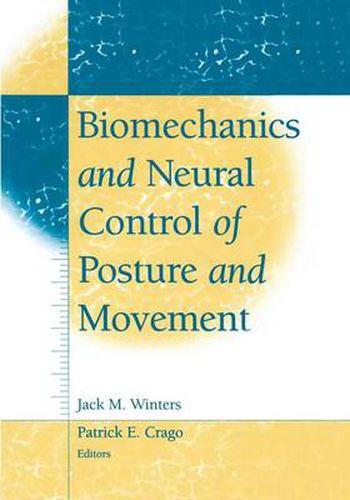Readings Newsletter
Become a Readings Member to make your shopping experience even easier.
Sign in or sign up for free!
You’re not far away from qualifying for FREE standard shipping within Australia
You’ve qualified for FREE standard shipping within Australia
The cart is loading…






This title is printed to order. This book may have been self-published. If so, we cannot guarantee the quality of the content. In the main most books will have gone through the editing process however some may not. We therefore suggest that you be aware of this before ordering this book. If in doubt check either the author or publisher’s details as we are unable to accept any returns unless they are faulty. Please contact us if you have any questions.
Most routine motor tasks are complex, involving load transmission through out the body, intricate balance, and eye-head-shoulder-hand-torso-leg coor dination. The quest toward understanding how we perform such tasks with skill and grace, often in the presence of unpredictable perturbations, has a long history. This book arose from the Ninth Engineering Foundation Con ference on Biomechanics and Neural Control of Movement, held in Deer Creek, Ohio, in June 1996. This unique conference, which has met every 2 to 4 years since the late 1960s, is well known for its informal format that promotes high-level, up-to-date discussions on the key issues in the field. The intent is to capture the high quality ofthe knowledge and discourse that is an integral part of this conference series. The book is organized into ten sections. Section I provides a brief intro duction to the terminology and conceptual foundations of the field of move ment science; it is intended primarily for students. All but two of the re maining nine sections share a common format: (l) a designated section editor; (2) an introductory didactic chapter, solicited from recognized lead ers; and (3) three to six state-of-the-art perspective chapters. Some per spective chapters are followed by commentaries by selected experts that provide balance and insight. Section VI is the largest section, and it con sists of nine perspective chapters without commentaries.
$9.00 standard shipping within Australia
FREE standard shipping within Australia for orders over $100.00
Express & International shipping calculated at checkout
This title is printed to order. This book may have been self-published. If so, we cannot guarantee the quality of the content. In the main most books will have gone through the editing process however some may not. We therefore suggest that you be aware of this before ordering this book. If in doubt check either the author or publisher’s details as we are unable to accept any returns unless they are faulty. Please contact us if you have any questions.
Most routine motor tasks are complex, involving load transmission through out the body, intricate balance, and eye-head-shoulder-hand-torso-leg coor dination. The quest toward understanding how we perform such tasks with skill and grace, often in the presence of unpredictable perturbations, has a long history. This book arose from the Ninth Engineering Foundation Con ference on Biomechanics and Neural Control of Movement, held in Deer Creek, Ohio, in June 1996. This unique conference, which has met every 2 to 4 years since the late 1960s, is well known for its informal format that promotes high-level, up-to-date discussions on the key issues in the field. The intent is to capture the high quality ofthe knowledge and discourse that is an integral part of this conference series. The book is organized into ten sections. Section I provides a brief intro duction to the terminology and conceptual foundations of the field of move ment science; it is intended primarily for students. All but two of the re maining nine sections share a common format: (l) a designated section editor; (2) an introductory didactic chapter, solicited from recognized lead ers; and (3) three to six state-of-the-art perspective chapters. Some per spective chapters are followed by commentaries by selected experts that provide balance and insight. Section VI is the largest section, and it con sists of nine perspective chapters without commentaries.